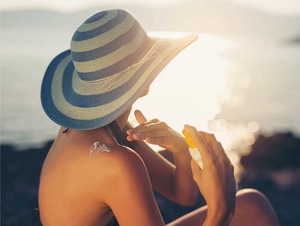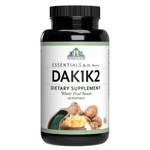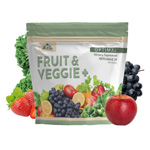
June 16, 2025 Puzzle Piece
The Dangers of Sunscreen and Answers
Getting
sunburned is not safe. The burn you feel when it happens is not as
severe as the lifetime damage and sets the stage for skin cancer later.
How do we protect ourselves and not raise the toxic burden to our
already overburdened toxic exposure?
We have included the research done by Dr Mark Hyman on this subject:
“People are rethinking their sunscreen because they’re uneasy about
what’s in the bottle. Some of the chemical ingredients commonly used to
block UV rays—like oxybenzone—have been linked to hormone disruption or
skin irritation. Others haven’t been studied thoroughly.
Sunscreens Raise Concerns
What do those long ingredient names actually mean on the back of the
bottles? Some of the most common chemical filters have raised red flags
for their potential effects on human health and the environment. Here
are a few you may want to avoid:
- Oxybenzone and octinoxate: linked to hormone disruption and banned in some locations for harming coral reefs.
- Homosalate: under review for safety due to potential endocrine-disrupting effects.
- Octocrylene: can break down into benzophenone, a possible carcinogen.
One
thing to keep in mind: The biggest concern with these ingredients isn’t
occasional use on a beach vacation. It’s about cumulative
exposure—using them regularly, over large areas of the body.
If you’re in a pinch, and the only sunscreen available contains one of
these ingredients, it’s still better than getting burned. But when you
have options, choosing a cleaner formula is a simple way to lower your
overall exposure.
How to Choose a Safer Sunscreen
When it comes to sunscreen, mineral-based formulas are generally your best bet.
Unlike chemical sunscreens, which absorb UV rays and can include
ingredients linked to hormone disruption, mineral sunscreens use
physical blockers—usually zinc oxide—to sit on top of the skin and
reflect UV light. They start working immediately, are less likely to
irritate sensitive skin, and don’t absorb into the bloodstream the way
some chemical filters can.
Look for sunscreens that use non-nano zinc oxide, which refers to
particle size. Non-nano particles are larger and less likely to be
absorbed through the skin, making them a safer choice for both people
and the environment.
If you’re trying to figure out whether your sunscreen makes the cut,
check out the Environmental Working Group’s (EWG) Guide to Sunscreens.
You can search by brand, see how your current product rates, and explore
safer options that meet EWG’s strict criteria for ingredient safety and
UV protection.

Here are three favorites:
- Annmarie Gianni Sun Love Natural Sunscreen SPF 20
This all-natural, mineral-based sunscreen isn’t rated by EWG, but it’s a
team favorite for everyday use. It uses non-nano zinc oxide for
broad-spectrum protection and includes antioxidant-rich botanicals.
Sunflower seed oil adds hydration and helps support the skin
barrier—especially helpful if you’re applying daily.
- Badger Sport Mineral Sunscreen Cream SPF 40
A reliable, water-resistant mineral sunscreen that’s earned a top
rating from the EWG. It features non-nano zinc oxide as the active
ingredient and keeps the rest of the formula simple: just a few clean
ingredients to nourish the skin while you’re out in the sun.
- Sunly Kids Mineral Sunscreen Face Stick SPF 30
This EWG Verified™ sunscreen stick is a convenient, mess-free option
for kids. (They also have an adult version.) It uses non-nano zinc oxide
for broad-spectrum protection and glides on easily without leaving a
heavy residue. The formula is fragrance-free, gentle on sensitive skin,
and made with moisturizing ingredients.
What about Sunblock Sprays?
If you’ve checked the Environmental Working Group (EWG) sunscreen guide,
you might’ve noticed that no spray sunblocks or sunscreens score better
than a 3 on their 1–10 hazard scale (where 1 is the safest and 10 is
the most concerning).
A 3 isn’t terrible—it often means the ingredients themselves are
relatively safe. But even mineral-based sprays that use zinc oxide or
titanium dioxide fall short for one big reason: inhalation risk.
When sprayed into the air, small particles can become airborne and enter
the lungs, where they may cause harm—especially over time or in
children. That concern is enough to drop the product’s overall safety
score, even if what’s on your skin is relatively clean.
Sprays also raise another issue: uneven coverage. It’s easy to miss
spots or apply too lightly, especially on windy days or when you’re in a
hurry. What looks like a fine mist doesn’t always translate to full
protection.”
It is important to wear a hat out in the sun and protective clothes when
possible. Many of them have a SPF rating of up to 50.
Nutrition is always important for all health and wellness
considerations. Sun exposure is no less important. OHS EFA’s are
protective to the skin and all of the body. DAK1K2 is important to get adequate levels of vitamin D and A.
Both are good for the skin, the immune system and hormonal balance. I
use DAK1K2 daily and always will. I like higher D levels (90-100) than
are usually recommended by the establishment.
 Optimal Fruit & Veggie Plus is the most potent antioxidant phytonutrient powder available.
Optimal Fruit & Veggie Plus is the most potent antioxidant phytonutrient powder available.
This a positive for the entire body and protective for the skin as well.
 In
our classes in September Super Seminar in Las Vegas and at January
Homecoming, Dr Brett and I will give you firsthand experiences in evaluation,
testing and treating that may give you answers you have been looking
for and not finding. Dr Harris is researching and improving his
remedies. Covid keeps mutating and continuing to prevent the immune
system from complete recovery in many cases. We will present the latest
in research and treatment. He also has many new topics and discoveries
never covered before.
In
our classes in September Super Seminar in Las Vegas and at January
Homecoming, Dr Brett and I will give you firsthand experiences in evaluation,
testing and treating that may give you answers you have been looking
for and not finding. Dr Harris is researching and improving his
remedies. Covid keeps mutating and continuing to prevent the immune
system from complete recovery in many cases. We will present the latest
in research and treatment. He also has many new topics and discoveries
never covered before.
JOIN US AT SUPER SEMINAR IN SEPTEMBER 2025 IN LAS VEGAS AND HOMECOMING IN JANUARY 2026 IN TEMPE, ARIZONA!
Please
attend our Certification Class Dr Brett and I will be teaching November
6-8, 2025, at this office in Gilbert, AZ. Gilbert is not far from the
Phoenix airport. Call Jason at the seminar office for full details at
480-964-5198.
Yours in Health and Wellness,
John W Brimhall, DC, BA, BS, FIAMA, DIBAK, Formulator, Patent Holder
(Only registered customers can rate)
There are no comments for this product.